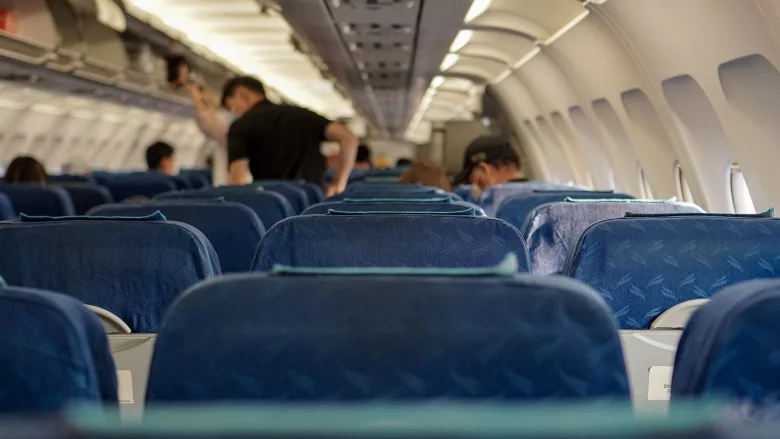Scars of COVID-19 pandemic leave airlines vulnerable to payment fraud

Image from Pixabay
Payment fraud has long been a particular challenge for the airline travel industry. In fact, according to RSA Security and Juniper Research, airlines are the vertical most affected by online fraud, accounting for 46% of fraudulent transactions.
With travel ramping up following the COVID-19 pandemic, this period is bound to be especially fraught for airline industry security leaders. Airlines are in a weakened state, facing staffing shortages and other operational strain. During the pandemic, the airline industry experienced a “brain drain” from which it has not recovered. The industry also faces an uphill battle to win new customers and gain back the goodwill and loyalty it has lost due to cancellations and scheduling chaos.
All of this is making it more difficult for legacy fraud strategies to detect fraud, create positive user experiences and safeguard revenue.
Unique industry threats
The airline travel industry is fertile ground for fraudsters. Tickets purchased online are intangible, can be easily transferred, and purchases must be confirmed quickly. Itineraries and schedules change often and purchasing patterns that would be red flags in other industries are normal in travel (for instance, a foreign credit card being used in the U.S. to travel to a third country).
The wide range of transaction amounts and services offered within the travel industry enable bad actors to conduct credit card testing, starting with smaller amounts, then ramping up to larger scale fraud. A fraudulent purchaser can evaluate an account on a coach flight from New York to Boston, then change their itinerary to go first class to London instead, then file a chargeback dispute for the increased amount.
Travel fraud is more likely to result in high dollar exposure. The average value of a fraudulently purchased ticket is much higher than the average legitimate purchase value, according to the International Airline Travel Association (IATA), which notes that fraudsters target “upper-tier products.” IATA’s 2020 Fraud in the Airline Industry Report states that “The average legitimate purchase is worth $606, while the average fraudulent purchase is more than three times higher, at $1,930.”
The airline industry is also susceptible to account takeover (ATO) fraud. Fraudsters can gain access to credit card information stored in users’ accounts as well as access airline frequent flyer points, which can be exchanged for goods and services directly from the account. Some airlines even allow users to transfer points from one account to another. The lull in business travel due to the pandemic meant that many consumers weren’t checking their loyalty accounts and more fraud went undetected.
The travel industry also experiences a high rate of chargebacks: when airline schedules go haywire, passengers that aren’t able to have their issues resolved through customer service may file a credit card dispute. Long wait times for airline customer assistance have exacerbated the number of chargebacks and increased the amount of “liar buyer” or friendly fraud. Distinguishing chargebacks made by legitimate customers from fraudulent chargebacks due to ATO attacks or liar buyer purchases is also a huge burden on the airline industry.
New passenger challenges
In addition to guarding against airline-specific fraud threats, airlines are also tasked with ensuring their fraud protection processes don’t hurt revenue as the industry tries to acquire new customers. Airlines compete with third-party booking sites for online business, and they must ensure they are providing e-commerce experiences that are in-line with user expectations.
The nature of the travel industry makes first-time purchases more common than in other online industries, as shoppers visit different airline sites to look for preferred ticket schedules. Without a transaction history with a passenger, travel merchants who use rule-based fraud detection solutions are often flying blind, and their systems may be more likely to decline good customers. Riskified data shows that across industries, payment declines cost e-commerce merchants $600 billion in revenue in 2020 — and 40% of customers abandon their cart after the first payment decline.
Another challenge straining airlines’ ability to retain customers is prolonged staffing shortages. Currently, wait times for a call to a major U.S. airline’s customer service number can be around two hours. This increases the likelihood of chargebacks and can also cause reputational damage. Passengers often take to social media when there are flight delays and cancellations. Also, reputational damage from a data breach due to ATO or other attacks can deter new potential customers and discourage loyalty program participation.
Navigating the current fraud environment
Given this challenging environment, security leaders can take steps now to guard against fraud without compromising passenger experience:
- Reduce staffing burdens by automating fraud detection. Streamlining transaction approvals with technology can free up personnel to focus on customer service and other functions that are desperately needed in today’s airline climate. Because machine learning (ML)-based technology can deliver higher accuracy than manual analysis, airlines can expect fewer false declines, which will have a direct impact on customer service needs.
- Algorithm optimization. International payments, last-minute purchasing and schedule changes make the travel industry a particularly complex one for automated fraud detection. Purchasing patterns that would be fraud indicators in other industries are the norm in travel. Ensure that the ML being deployed is navigating travel patterns to minimize false transaction declines. Travel patterns post-pandemic are changing fast — having insight into those changes enables security leaders to be initiative-taking and mitigate risk. If airlines fail to bolster their fraud prevention strategies, they’ll be hit with massive revenue losses, mounting operational costs, and will lag behind in trying to rebuild a loyal customer base.
- Tackle chargebacks and friendly fraud. Disputing chargebacks is costly for airlines. Stopping chargeback abuse requires the ability to unmask the real identity behind an order, which airlines must do at scale. Chargeback incidents are often not a one-time occurrence. By fighting and winning liar buyer chargebacks, airlines can discourage repeat offenders.
Looking for a reprint of this article?
From high-res PDFs to custom plaques, order your copy today!








